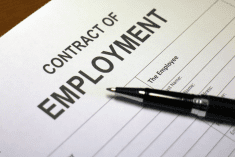Do you stand with your arms crossed when you talk to an employee or family member about work? Do you ignore some people when they share ideas or contribute to a conversation? Are you cheerful when you say good morning to some work colleagues, but others not so much?
These are all warning signs of personal biases you aren’t even aware of, and they may be making your workplace uncomfortable — or worse — for those on the receiving end.
When we think of biases, we often think about overt, aggressive behaviour like bullying and name-calling, or maybe even physical violence. We think that if we don’t engage in those behaviours, we can’t be discriminatory or prejudiced, right?
Read Also

The big squeeze: How to be fair to siblings during farm succession
Managing sibling business relationships on family farms.
But our personal biases — and we all have them, whether we are conscious of them or not — can lead us to react and behave in ways that are offensive or hurtful, and that hold the people we work with back from achieving their full potential.
In fact, the first step in being able to manage or eliminate the effects of personal bias from the workplace is being able to identify it in ourselves, which is especially crucial for those in a leadership role.
The Canadian Agricultural Human Resource Council (CAHRC) deals with how to identify and manage personal bias as part of its online AgriHR Toolkit, and it’s worth checking out.
When it comes to people, we tend to prefer those who are most like us, so we may shun or distrust those who don’t share our political or religious beliefs, or our culture or ethnicity. That can lead us to make negative assumptions about them, and can lead to unfair treatment and resentment.
It’s human to have personal biases, but everyone has a responsibility to be aware of them and to work towards eliminating them from the workplace, our homes and our communities.
The first step is to recognize signs of bias in ourselves and to accept them for what they are, even though we may be totally unconscious of them.
CAHRC has a Bias Awareness Checklist as part of its AgriHR Toolkit’s Diversity and Inclusion section that is a great starting point to help employers, business owners and employees identify their own personal biases.
The checklist suggests a number of statements and actions that help to identify personal biases and offers suggestions about how to learn to be more respectful of other people with different beliefs, perspectives or experiences.
For example: “I have tried to educate myself about discrimination by discussing the topic with others or reading about it,” or “I try not to use words or phrases that may be perceived by others as degrading or hurtful, even when I’m making a joke in casual conversation,” or “I have made a commitment to learn more about a culture that is different from my own, through reading, study and listening.”
Many biases are unconscious, and we often don’t even realize that some of the things we do or say can have a profoundly negative or hurtful impact on others even though they seem insignificant to us.
Some signs of unconscious bias include impatient, negative or hostile body language or tone of voice, a failure to acknowledge the presence of someone, or comments or behaviour that make someone feel excluded, such as listening to someone with your arms crossed, not paying attention or checking your phone, watch or computer while they are speaking, rolling your eyes, or singling one person out for praise while ignoring another.
Examine your interactions with others for signs of unconscious bias. Are you listening? Are you excluding or including certain people?
Who are you encouraging and discouraging? Are you ignoring someone on a consistent basis?
Tips adapted from CAHRC’s AgriHR Toolkit for eliminating personal bias include:
- Educate yourself about other people and groups. Take the time to learn about their history, background and challenges they face.
- Take the time to talk with someone who you don’t usually talk to or who you see being left out of conversations.
- Don’t ignore, dismiss, interrupt or speak over others.
- Seek input from everyone and acknowledge anyone who contributes.
- Pay full attention, listen to everyone and don’t be distracted by devices.
- Don’t use negative, non-verbal behaviours such as rolling your eyes, sighing or shaking your head when people are speaking or interacting with you and/or a group.
- Always give credit to whoever provides input or ideas.
- Be a role model. By modelling these behaviours yourself, you will begin to inspire the same kinds of change in others
- Look out for and correct negative behaviours in others. Make it clear, when necessary, that this is the standard you expect everyone in the organization to uphold.
Vital definitions*
Stereotype. A stereotype is a widely held belief about a particular group of people. These unfounded beliefs can cause us to overgeneralize and negatively focus on the differences between groups of individuals.
Prejudice. Prejudice is a prejudgment, or an assumption about someone or something without having adequate knowledge. This form of bias often results from a lack of understanding or experience with certain groups.
Discrimination. Discrimination is the act of placing barriers or denying opportunities based on prejudice and stereotypes to groups that are protected under the Canadian Human Rights Act, including race, national or ethnic origin, colour, religion, age, sex, sexual orientation, marital and family status, disability, and pardoned conviction.
*(With thanks to CAHRC’s AgriHR Toolkit: hrtoolkit.cahrc-ccrha.ca)
















